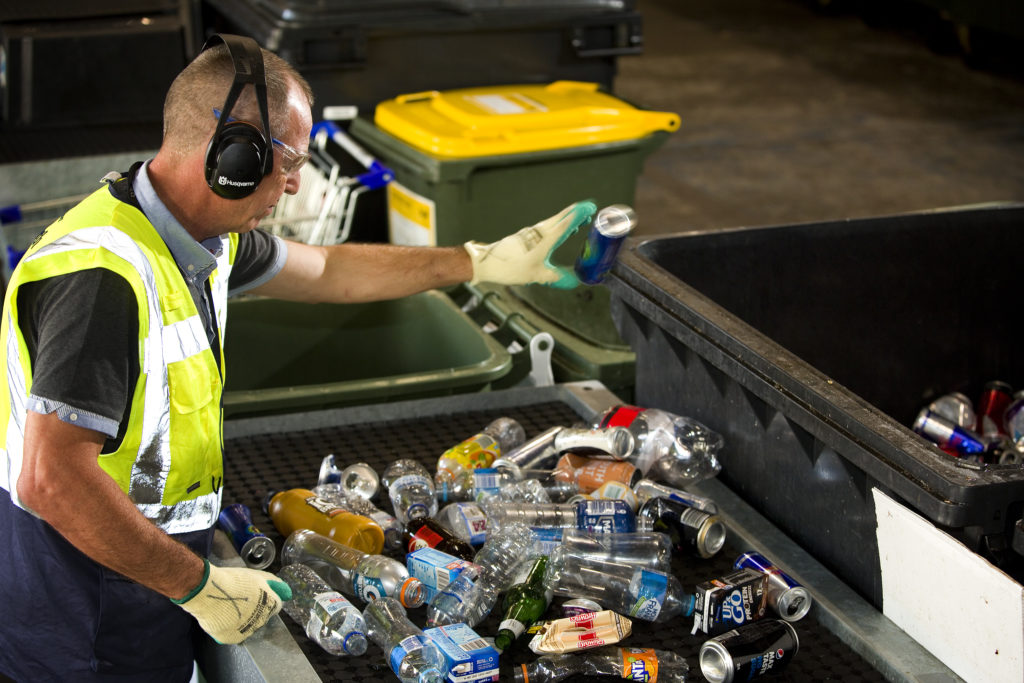Where we’ve been
Over 80 local government representatives attended the forum
held on Monday 28 November at the City of Gosnells.


Wendy Glasser
Special Counsel, Mills Oakley
Wendy is a defendant-based insurance litigator with 20 years’ experience in all major classes of general insurance claims, with a sustained focus on defending workers’ compensation (including psychiatric injury and recovery claims), fatal work accidents and multi-party common law claims. Wendy advises insurers, self-insureds and employers at every stage of a claim, ranging from routine to complex and in a variety of workplaces and other settings. Wendy has been successful in both formal and informal conference environments, with an impressive track record of resolving disputes pre-litigation.
*Disclaimer: the following scenario is entirely fictitious and not based on any real people, organisations or events. The accompanying commentary is not and should not be considered as legal advice.

Over 80 local government representatives attended the forum
held on Monday 28 November at the City of Gosnells.
WALGA and State Council take their responsibility as Trustee of your Scheme very seriously and regularly review the Scheme and the services provided to members.
The 2021 LGIS WorkCare Forum was a great success, packed with speakers across a range of disciplines the WorkCare Forum
Stephen is a 45 year old labourer in the City’s parks and gardens department. He has a liability-accepted claim for a significant injury to his right foot, including crush injuries to the toes and a comminuted distal phalanx fracture of the great toe – the result of his foot being run over by a ride-on mower operated by co-worker, Nathan, in the course of his employment on 2 July 2018.
Stephen is later diagnosed with complex regional pain syndrome (“CRPS”) affecting his right foot.
Stephen is off work for 18 months because he is totally unfit but is then certified fit for light duties of 3 hours a day. However, his colleagues are frustrated by Stephen’s limited ability to help with heavier tasks, and he receives sarcastic remarks from senior colleagues. Stephen returns to see his GP who certifies him totally unfit on account of a secondary adjustment disorder and stress, requiring counselling.
Stephen appoints lawyers and is assessed by a medico-legal expert as having a 10% whole personal impairment (“WPI”) (31.25% of Item 67 of Schedule 2). Additionally, a consultant psychiatrist (appointed by Stephen’s lawyers) diagnoses him with major depression secondary to Stephen’s pain and physical restrictions caused by the injury.
On his lawyer’s advice, Stephen also elects to change his vocational rehabilitation provider.
Meanwhile, Nathan has left the City and has moved back home to Ireland.
Two years after the accident, in mid-2020 Stephen’s lawyers make an offer to settle his claim by a redemption agreement for the sum of $130,000 as well as Stephen’s voluntary resignation from his employment with the City. The offer consists of:
(a) 1.5 years’ worth of future wages
(b) $15,000 for future medical expenses
(c) $10,000 for future vocational rehabilitation assistance, and
(d) a Schedule 2 payment of $46,375 under Item 67 for the right leg below the knee
Stephen’s lawyers assert that Stephen has a clear case in negligence against the City and that he intended to make a claim for damages if he could satisfy the 15% WPI common law threshold.
Negotiations ensue but Stephen is not prepared to accept any less than $100,000 plus $15,000 for legal costs and disbursements, while the City is not prepared to offer more than $75,000 plus $8,000 for legal costs and disbursements.
The City has paid approximately $150,000 in weekly payments and statutory expenses.
As we can see above, the parties have reached a stalemate – being only $25,000 apart exclusive of Stephen’s costs. Why and how can such situations be avoided?
Early in the claim process, it’s important to identify warning signs that a claim may be difficult to manage or that an injured worker will remain on weekly payments for a long period of time, possibly until the prescribed amount has been reached.
Key definitions
CRPS – complex regional pain syndrome
WPI – whole person impairment
Caulderbank – A Calderbank offer is a type of settlement offer made prior to judgment in a dispute. If the offer is rejected and the case proceeds to judgment, if the offering party can show it was unreasonable for the other party to reject their offer, it can affect who will be ordered to pay the costs of the proceeding, and how much.
In relation to this scenario, consider the following issues:
In relation to this scenario, consider the following issues:
More than two years after the accident, Stephen submits a new claim form to the City dated 20 September 2020 alleging that, in addition to his right foot, he injured his neck on 2 July 2018, describing the injury as “jolting my neck”.
A report by Stephen’s consultant neurosurgeon contains a history that when Stephen’s right foot was run over he looked down sharply and fell backwards onto the ground, jarring his neck in the process. Stephen alleged that from approximately 2 weeks after the accident, he began experiencing a lot of neck pain, headaches and “tingling” in the right upper limb, with similar symptoms developing in the left upper limb some months later.
Stephen said he did not report the neck pain originally because it was never as bad as his foot pain, and that he had experienced neck pain and stiffness occasionally before the accident and thought that might prevent him claiming for it.
The neurosurgeon concluded that the work accident had likely aggravated Stephen’s congenital cervical stenosis to the point he now required surgery. The doctor also suspected Stephen’s neck pain had been masked somewhat by the opioid medication he was taking for his foot injury.
Stephen’s lawyers write to the City’s lawyers pressing for a decision on liability for the cervical spine injury and seeking confirmation that the City will agree to fund a cervical spine discectomy.
It is easy to see how claims can escalate as time passes and the injured worker becomes more entrenched in the legal process.
In Stephen’s case, the remainder of the prescribed amount for medical expenses (~$40,000) probably won’t be enough to cover his cervical discectomy and after care, and Stephen’s lawyers will probably apply to WorkCover WA for an extension of the prescribed amount.
In deciding whether to accept or dispute liability for the neck injury, the City will need to investigate the allegations regarding the onset of Stephen’s cervical spine symptoms as relayed to his neurosurgeon, and promptly arrange an assessment by an independent neurosurgeon. Additionally, Stephen’s medical records need to be obtained to cross-check whether his report of the injury onset are consistent with the history given to Stephen’s neurosurgeon. Obtaining a signed authority to access personal information on the second page of the worker’s claim form at the start of the claim will make this process much easier.
If Stephen’s lawyers file a WorkCover application for a determination of liability for the neck injury, the City will incur unrecoverable defence costs. Further, if the dispute cannot be settled and there’s an arbitration hearing, the City lawyers may need to call other City employees to give evidence at the hearing, which is often disruptive and stressful for the witnesses, and could result in additional claims.
If liability for the neck injury is accepted or determined in Stephen’s favour and he undergoes surgery, the combined WPI for Stephen’s neck and right foot injuries will almost certainly reach the 25% threshold for an uncapped claim. (Refer to table 15.5 in the AMA Guides to the Evaluation of Permanent Impairment 5th Ed., DRE Cervical Category III.)
While the WorkCover dispute process provides several opportunities for the parties to discuss overall claim settlement, there is a risk for the City that Stephen will want to undergo the surgery before considering his future and the claim.

The City’s neurosurgeon supports a causal connection between the work accident on 2 July 2018 and an aggravation of the pre-existing cervical spine condition, and its lawyers advise there is little choice but to accept liability to fund the surgery.
Whilst Stephen had suffered prior neck symptoms by his own admission, these were apparently quite minor and comparing imaging investigations from before and after the accident showed there was a greater level of nerve root impingement after the accident and there was no other explanation for this deterioration.
Stephen’s lawyers obtain a new AMS assessment of 20% WPI for the neck and right leg combined and a District Court Writ of Summons is served seeking damages, indorsed with a Statement of Claim. It is being alleged that the City was vicariously liable for the negligence of Nathan in failing to keep a proper lookout and failing to operate his mower a safe distance from other employees. Further, that the City was negligent for failing to implement a safe system of work, adequate training and instructions, and failing to adequately supervise its mowing crew.
The City is unable to locate any induction records, training records, or safe work procedures relevant to the job that was being undertaken but feels the accident was Stephen’s own fault because he was not wearing steel capped safety boots, was listening to music with earpods in and had unexpectedly stepped into Nathan’s path when he ought to have known that the mower was approaching.
Meanwhile, the crew leader at the time no longer works for the City, having been terminated in 2019 for breaches of the City’s Code of Conduct.
On 20 December 2020 Stephen’s lawyers make an offer to settle the common law claim for
$300,000 plus $25,000 for costs and disbursements.
As you can see, things have become really messy and it’s unlikely Stephen would consider settling his claim for $100,000 plus costs and disbursements, which he previously offered but the City rejected.
Looking at Stephen’s WPI assessment of 20% and his latest offer to settle the claim, the City has a good opportunity to make a reasonable counter offer reflective of its risk to a capped claim (‘Amount A’ less compensation paid and a discount for Stephen’s negligence) and to avoid a trial.
In deciding whether to settle or defend the claim at trial, the City should consider:
If the claim settles at pre-trial conference stage, the City can expect Stephen’s lawyers to seek costs and disbursements in the range of $65,000 – $100,000 depending on the complexity of the pleadings, the number of pre-trial conferences attended, the plaintiff’s disbursements, and his barrister’s fees.

It is March 2021 and the District Court proceedings haven’t settled.
Three months before the pre-trial conference Stephen’s lawyers disclose an up-to-date neurosurgeon’s opinion stating that Stephen’s symptoms of weakness and tingling in the upper limbs is due to further worsening of his cervical pathology.
The discectomy that Stephen recently had was unsuccessful and, according to his neurosurgeon, he needs a cervical fusion to hopefully resolve his arm symptoms but probably not his neck pain. After a fusion, the specialist believes that Stephen’s WPI would be in the order of 20 – 25% not including his right foot.
Stephen’s lawyers file particulars of damages ahead of the pre-trial conference seeking damages on an uncapped basis of $1,175,000 exclusive of workers’ compensation, plus costs and disbursements.
In a letter to the City’s lawyers, four weeks before the pre-trial conference, Stephen’s lawyers send a Calderbank letter of offer to settle his claim for $600,000 plus $60,000 for costs and disbursements.
It is not difficult to see that in the near 3 years since Stephen’s accident at work, things have gone from bad to worse for both sides. Stephen’s WPI assessments have escalated from falling below the statutory threshold for common law, to a capped claim, to a guaranteed uncapped claim with a cervical fusion. Making matters worse, the City cannot defend the claim on liability because it possesses no documentary evidence to prove that is was a prudent employer and no reliable witness testimony if there is a trial.
By making a Calderbank offer to settle the claim, Stephen’s lawyers are giving the City a stark reality check by putting them on notice that, if the case proceeds to judgment and the outcome is the same as the offer, the letter can be relied on in Court regarding costs on an indemnity basis, from the date of the offer.
Having regard to the offer, which is approximately half of Stephen’s Particulars of Damages, and the available evidence, the City can reasonably assume that Stephen would seriously consider any offer to settle the claim before trial of $450,000 or above plus costs and disbursements.
The moral of this story is that where the employer’s liability risk is clear, the focus ought to be on reducing the size of the claim (aka quantum) by way of credible and up-to-date specialist medical evidence and effective negotiation techniques to finalise the claim as soon as possible. If the medical evidence is against you, cut your losses and settle the claim early despite any personal opinions, feelings or hunches about the injured worker and his/her intentions. Trials are expensive and there are often surprises.
Equally, even when the evidence is on your side, proceed with caution and take the time to investigate whether the Plaintiff has adequate and accessible financial assets to satisfy an order for costs if the claim fails at trial. A win in those circumstances is really a loss.

Aquatic centres have unique risks – along with the usual physical risks like lifting, there are also high-risk processes of managing pool chemicals and moving chlorine, often while the public are utilising the facilities.

WA local governments control over 140 landfill facilities and approximately 84 waste transfer stations.
Waste and recycling facilities are considered high risk due to the increased levels of combustibles, the potential for environmental damage, and health and safety concerns.

Conflict in the workplace is almost an inevitable part of working life.
It is common to have disagreement with colleagues due to the fact that you are working with people who have different working preferences, personal values, and working styles.
LGIS is the unifying name for the dedicated suite of risk financing and management services for WA local governments, established by the WA Local Government Association in conjunction with JLT Public Sector (part of the Marsh group of companies). LGIS is managed by JLT Public Sector (ABN 69 009 098 864 AFS Licence 226827).
Risk Matters, via this website, is designed to keep members, their staff and elected members informed on topical risk management and insurance issues and LGIS programs and services.